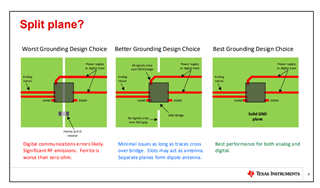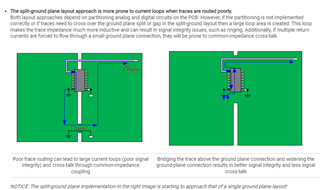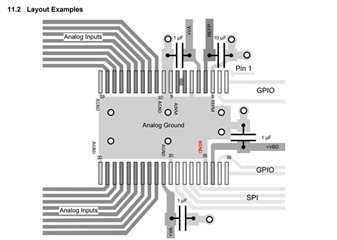Hi Team,
In page no 43: It shows only analog ground , why is digital ground and its connection to IC DGND pin 27 and to analog ground is not addressed?
Is there a specific document for mixed signal layout for this IC other than the datasheet? I could only find a general pcb guideline which I found in this link: e2e.ti.com/.../faq-pcb-layout-guidelines-and-grounding-recommendations-for-high-resolution-adcs
Thank you.
Regards,
May




